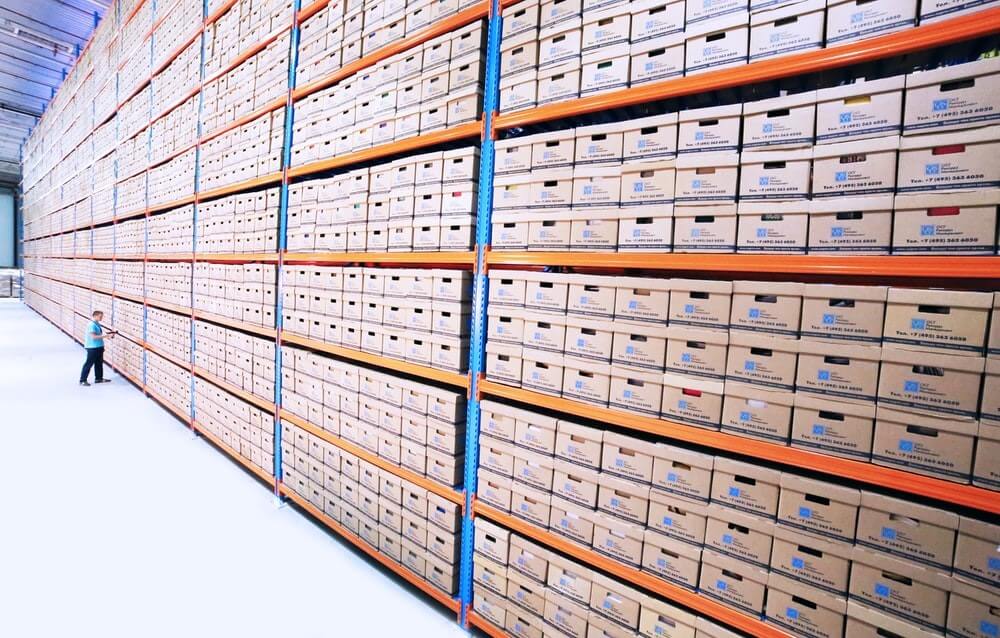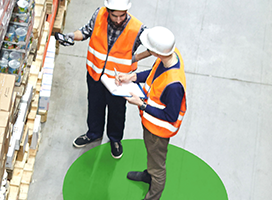
With retail eCommerce revenue projected to exceed $1.3 trillion by 2025, eCommerce fulfillment operations have been struggling to keep up with higher than estimated growth. The COVID-19 pandemic fueled more online shopping, illustrating for many consumers the benefits of being able to order items online with a few simple clicks.
Among other factors, space and labor will be key in meeting the continuous growth in eCommerce fulfillment centers. But this industry is currently stretched to its limits as companies battle to turn over inventory and meet consumer expectations.
Some of the benefits that companies realize by investing in an eCommerce fulfillment strategy include greater cost efficiencies, more cost savings, and improved customer satisfaction. But just trying harder isn't the answer for businesses that want to remain competitive. Here are eight eCommerce fulfillment trends that are taking shape for 2022 as this industry continues to evolve.
1. Broadening Supplier Base
 Delivery problems have plagued the eCommerce industry since the beginning of the pandemic for various reasons. Demand outsized supply for some goods, there were significant worker and truck driver shortages, factories were unable to pivot to serve different markets, and warehouse space couldn't accommodate changing needs.
Delivery problems have plagued the eCommerce industry since the beginning of the pandemic for various reasons. Demand outsized supply for some goods, there were significant worker and truck driver shortages, factories were unable to pivot to serve different markets, and warehouse space couldn't accommodate changing needs.
This is why companies now realize the importance of having a broader supplier base and contingency plans in place to lessen or prevent delivery failures. Having different shippers and materials or product suppliers in the pipeline makes logistics companies and their business partners more agile.
2. Customer Journey
 People who had never hit a "buy" button online or on their phones began doing so with regularity once the pandemic hit. And those who were regular online shoppers for clothing or electronics also began purchasing groceries and household goods through various websites and apps. Over the past several years, consumers have become more vocal about their wants and needs from eCommerce companies.
People who had never hit a "buy" button online or on their phones began doing so with regularity once the pandemic hit. And those who were regular online shoppers for clothing or electronics also began purchasing groceries and household goods through various websites and apps. Over the past several years, consumers have become more vocal about their wants and needs from eCommerce companies.
There is a growing trend among eCommerce providers that emphasizes the customer journey. Specifically, companies are making changes to their online platforms and processes that make it easier to purchase items and track those purchases from shopping cart to doorstep. This includes sending automatic notifications when an item ships and helpful tips for correct product selection.
3. Direct to Consumer (DTC) Fulfillment
In 2022 alone, direct-to-consumer eCommerce is expected to bring in $151.3 million in sales, a 15% year-over-year increase. Some of the brands that are now skipping retail stores and eCommerce outlets include Levi's, Under Armor, and Nike. In 2010, just 15% of Nike's revenue came from DTC sales. That figure is expected to increase to 60% by 2025.
What does this trend mean for eCommerce logistics? Some logistics companies handle DTC business for major brands, so they will ship DTC instead of to retail outlets. Otherwise, there's a chance that fulfillment companies could lose business to brands that decide to take their DTC functions in-house.
4. Real-time Tracking
Today's consumers and business partners have become accustomed to receiving real-time information about product availability and fulfillment. Most large eCommerce logistics companies have implemented these systems, and the mid-sized and smaller ones are following suit.
 Individual products have RFID tags attached, which are resistant to extreme conditions. When products move from the manufacturer to the warehouse, the RFID tags are scanned, providing real-time inventory tracking data for logistics companies and their partners. eCommerce stores can use the data for inventory control and automatically notify customers as the purchased product moves through the supply chain.
Individual products have RFID tags attached, which are resistant to extreme conditions. When products move from the manufacturer to the warehouse, the RFID tags are scanned, providing real-time inventory tracking data for logistics companies and their partners. eCommerce stores can use the data for inventory control and automatically notify customers as the purchased product moves through the supply chain.
5. Last-Mile Logistics
 One of the biggest logistical challenges eCommerce companies face is last-mile logistics. This refers to the final phase of order fulfillment, where the item makes its way to the customer's door. Bottlenecks in last-mile delivery can occur due to labor issues, traffic, remote locations, government regulations, and even special customer requests.
One of the biggest logistical challenges eCommerce companies face is last-mile logistics. This refers to the final phase of order fulfillment, where the item makes its way to the customer's door. Bottlenecks in last-mile delivery can occur due to labor issues, traffic, remote locations, government regulations, and even special customer requests.
One of the ways that companies are tackling this issue is by pooling resources to contract with last-mile logistics providers. In turn, those providers are thinking outside the box by using solutions like eCargo bikes, drones, and autonomous ground vehicles to get products into consumers' hands.
6. Hybrid Order Fulfillment
When ordering items online, there are now multiple options to get them into your home. Services like BOPIS (Buy Online Pick-Up In-Store) and curbside pickup were almost unheard of before the pandemic. But now, 60% of consumers plan on using BOPIS services over the next year, according to a recent survey.
When fulfillment companies branch out to these hybrid order fulfillment options, it takes some of the load off traditional methods and supply chains. However, these types of systems will require the use of a unified inventory system so that stores can pull from their on-site stock to fulfill online orders.
7. Automation
Whether it takes the form of robots roaming the warehouse floor, reverse logistics solutions, or a warehouse management system (WMS), the demand for automation in the logistics industry has soared as a solution to complex supply chains and labor shortages.
By 2026, the global warehouse automation market is estimated to be worth over $30 billion. A recent survey by ARC Advisory Group revealed that 79% of respondents were either "likely" or" very likely" to invest in automation within the next 1-3 years. 3PLs can choose the automation solutions that make the most sense, such as automated picking systems or robotic forklifts.
8. Sustainability
The COVID-19 pandemic has dominated the headlines for several years, sometimes pushing things like climate change and social responsibility to the margins. But brands haven't abandoned their commitment to environmental and sustainability issues. Likewise, consumers still care deeply about these matters.
To meet the growing demands of customers and do the right thing for the planet, more eCommerce companies and logistics providers will make sustainability a priority. This might involve using recyclable packaging, CO2-neutral shipping, and more energy-efficient equipment.
Retail is much different than it was just a few short years ago, thanks to the global health crisis. The eCommerce market has scaled nearly beyond recognition, placing fulfillment companies in some tough positions. But the companies that adopt some of these eCommerce fulfillment trends have an opportunity to achieve greater efficiencies in their operations and better overall business results.












